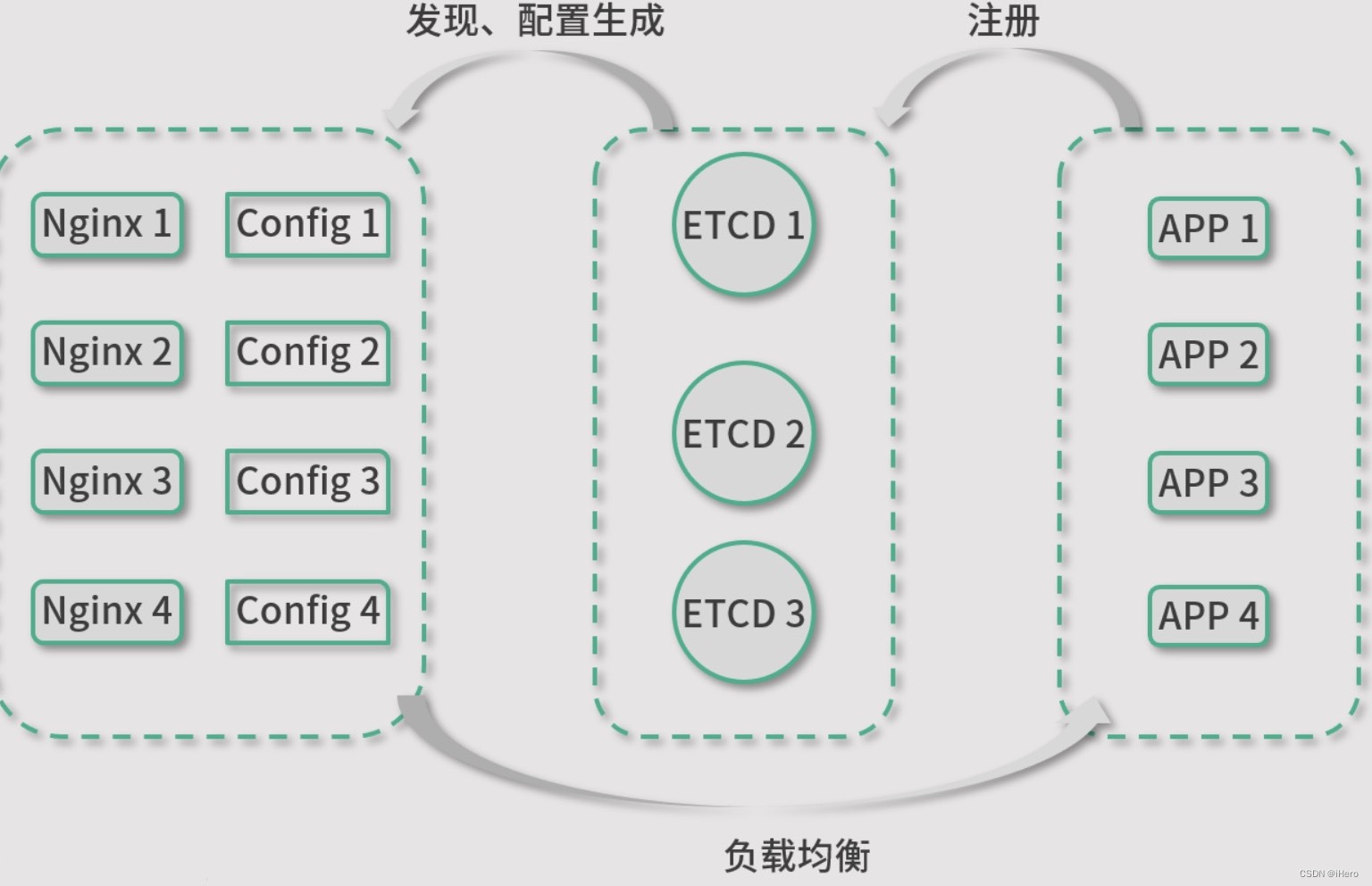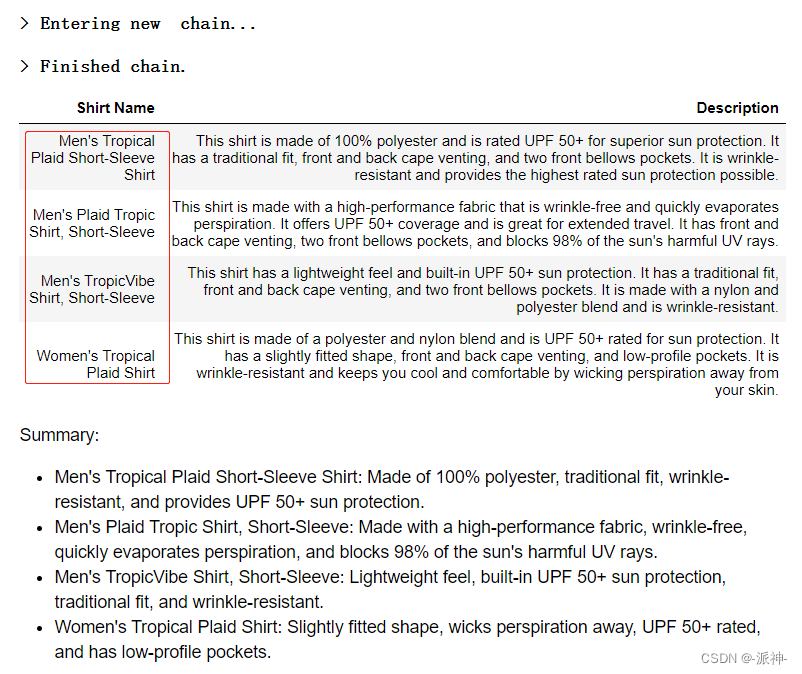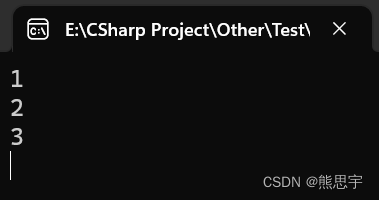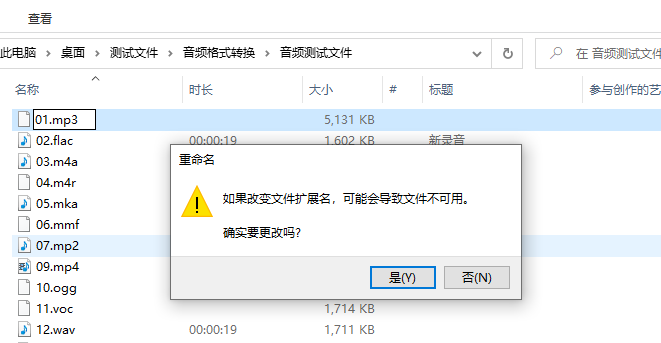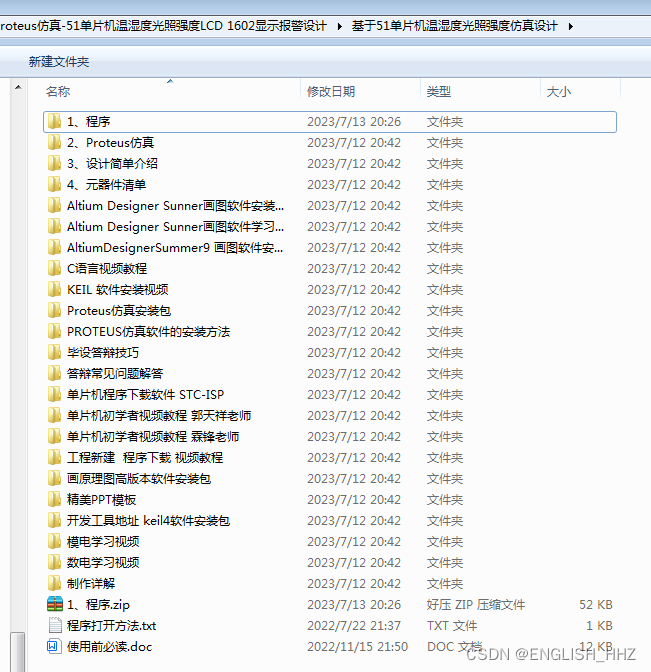文章目录
- 1. 数据集说明
- 2. 数据处理
- 2.1 数据导入
- 2.2 数据清洗
- 3.数据分析可视化
- 3.1 用户流量及购物情况
- 3.2 用户行为转换率
- 3.3 用户行为习惯
- 3.4 基于 RFM 模型找出有价值的用户
- 3.5 商品维度的分析
- 4 最后
1. 数据集说明
这是一份来自淘宝的用户行为数据,时间区间为 2017-11-25 到 2017-12-03,总计 100,150,807 条记录,大小为 3.5 G,包含 5 个字段。
2. 数据处理
2.1 数据导入
将数据加载到 hive, 然后通过 hive 对数据进行数据处理。
-- 建表
drop table if exists user_behavior;
create table user_behavior (
`user_id` string comment '用户ID',
`item_id` string comment '商品ID',
`category_id` string comment '商品类目ID',
`behavior_type` string comment '行为类型,枚举类型,包括(pv, buy, cart, fav)',
`timestamp` int comment '行为时间戳',
`datetime` string comment '行为时间')
row format delimited
fields terminated by ','
lines terminated by '\n';-- 加载数据
LOAD DATA LOCAL INPATH '/home/getway/UserBehavior.csv'
OVERWRITE INTO TABLE user_behavior ;
2.2 数据清洗
数据处理主要包括:删除重复值,时间戳格式化,删除异常值。
--数据清洗,去掉完全重复的数据
insert overwrite table user_behavior
select user_id, item_id, category_id, behavior_type, timestamp, datetime
from user_behavior
group by user_id, item_id, category_id, behavior_type, timestamp, datetime;--数据清洗,时间戳格式化成 datetime
insert overwrite table user_behavior
select user_id, item_id, category_id, behavior_type, timestamp, from_unixtime(timestamp, 'yyyy-MM-dd HH:mm:ss')
from user_behavior;--查看时间是否有异常值
select date(datetime) as day from user_behavior group by date(datetime) order by day;--数据清洗,去掉时间异常的数据
insert overwrite table user_behavior
select user_id, item_id, category_id, behavior_type, timestamp, datetime
from user_behavior
where cast(datetime as date) between '2017-11-25' and '2017-12-03';--查看 behavior_type 是否有异常值
select behavior_type from user_behavior group by behavior_type;
3.数据分析可视化
3.1 用户流量及购物情况
--总访问量PV,总用户量UV
select sum(case when behavior_type = 'pv' then 1 else 0 end) as pv,count(distinct user_id) as uv
from user_behavior;
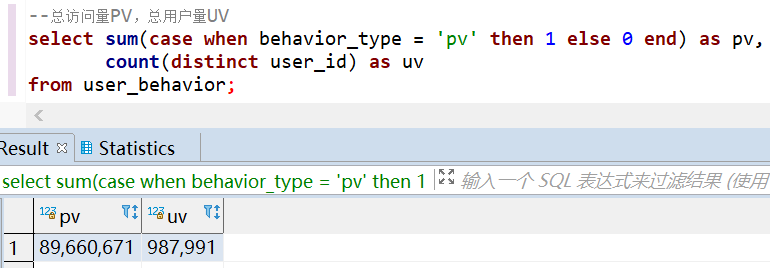
--日均访问量,日均用户量
select cast(datetime as date) as day,sum(case when behavior_type = 'pv' then 1 else 0 end) as pv,count(distinct user_id) as uv
from user_behavior
group by cast(datetime as date)
order by day;
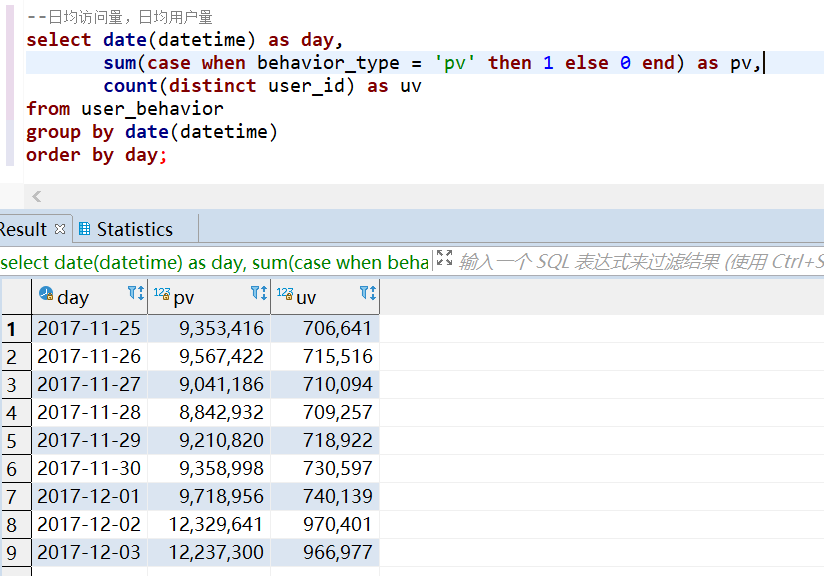
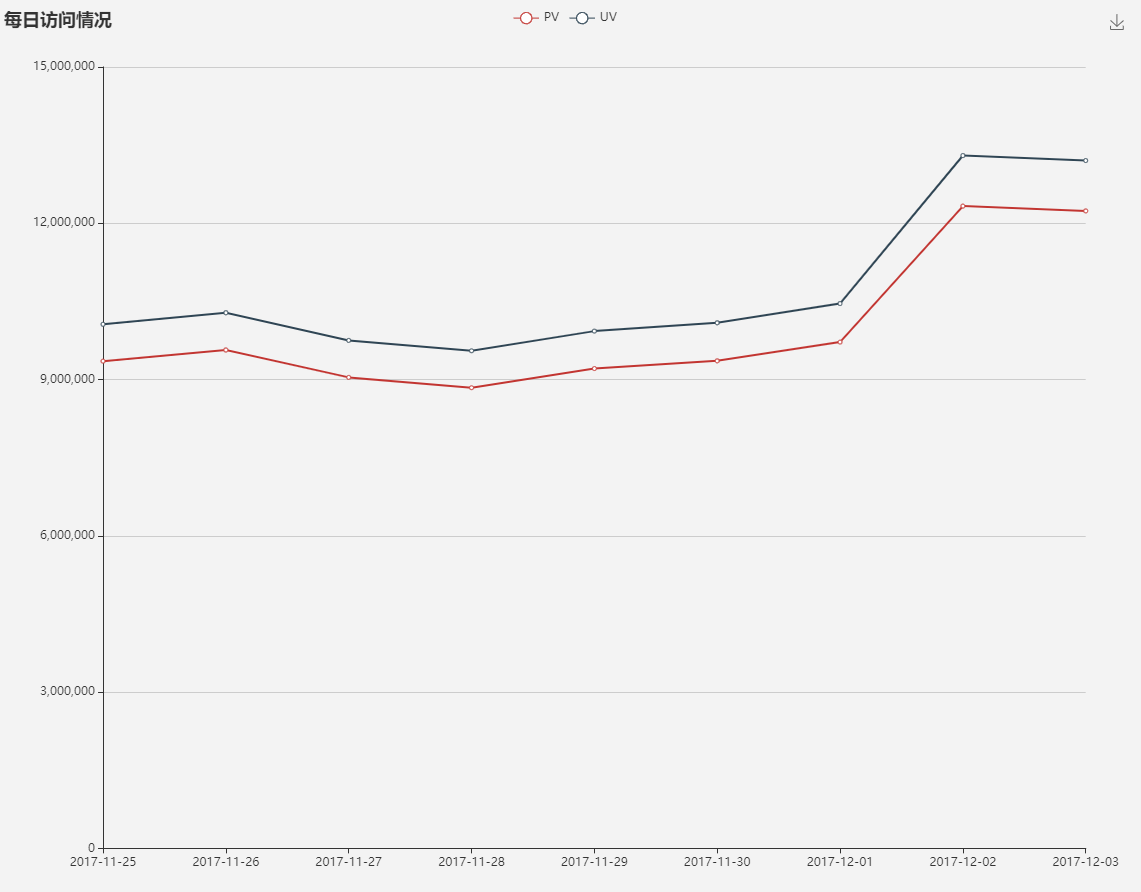
--每个用户的购物情况,加工到 user_behavior_count
create table user_behavior_count as
select user_id,sum(case when behavior_type = 'pv' then 1 else 0 end) as pv, --点击数sum(case when behavior_type = 'fav' then 1 else 0 end) as fav, --收藏数sum(case when behavior_type = 'cart' then 1 else 0 end) as cart, --加购物车数sum(case when behavior_type = 'buy' then 1 else 0 end) as buy --购买数
from user_behavior
group by user_id;--复购率:产生两次或两次以上购买的用户占购买用户的比例
select sum(case when buy > 1 then 1 else 0 end) / sum(case when buy > 0 then 1 else 0 end)
from user_behavior_count;

- 小结:2017-11-25 到 2017-12-03 这段时间,PV 总数为 89,660,671 ,UV 总数为 987,991。从日均访问量趋势来看,进入 12 月份之后有一个比较明显的增长,猜测可能是因为临近双 12 ,电商活动引流产生,另外,2017-12-02 和 2017-12-03 刚好是周末,也可能是周末的用户活跃度本来就比平常高。总体的复购率为 66.01%,说明用户的忠诚度比较高。
3.2 用户行为转换率
--点击/(加购物车+收藏)/购买 , 各环节转化率
select a.pv,a.fav,a.cart,a.fav + a.cart as `fav+cart`,a.buy,round((a.fav + a.cart) / a.pv, 4) as pv2favcart,round(a.buy / (a.fav + a.cart), 4) as favcart2buy,round(a.buy / a.pv, 4) as pv2buy
from(
select sum(pv) as pv, --点击数sum(fav) as fav, --收藏数sum(cart) as cart, --加购物车数sum(buy) as buy --购买数
from user_behavior_count
) as a;
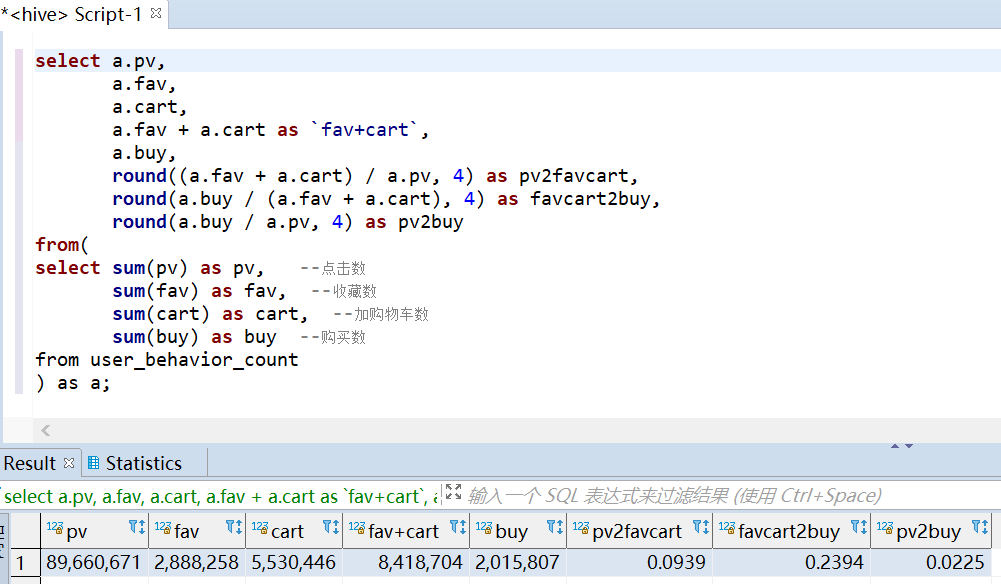
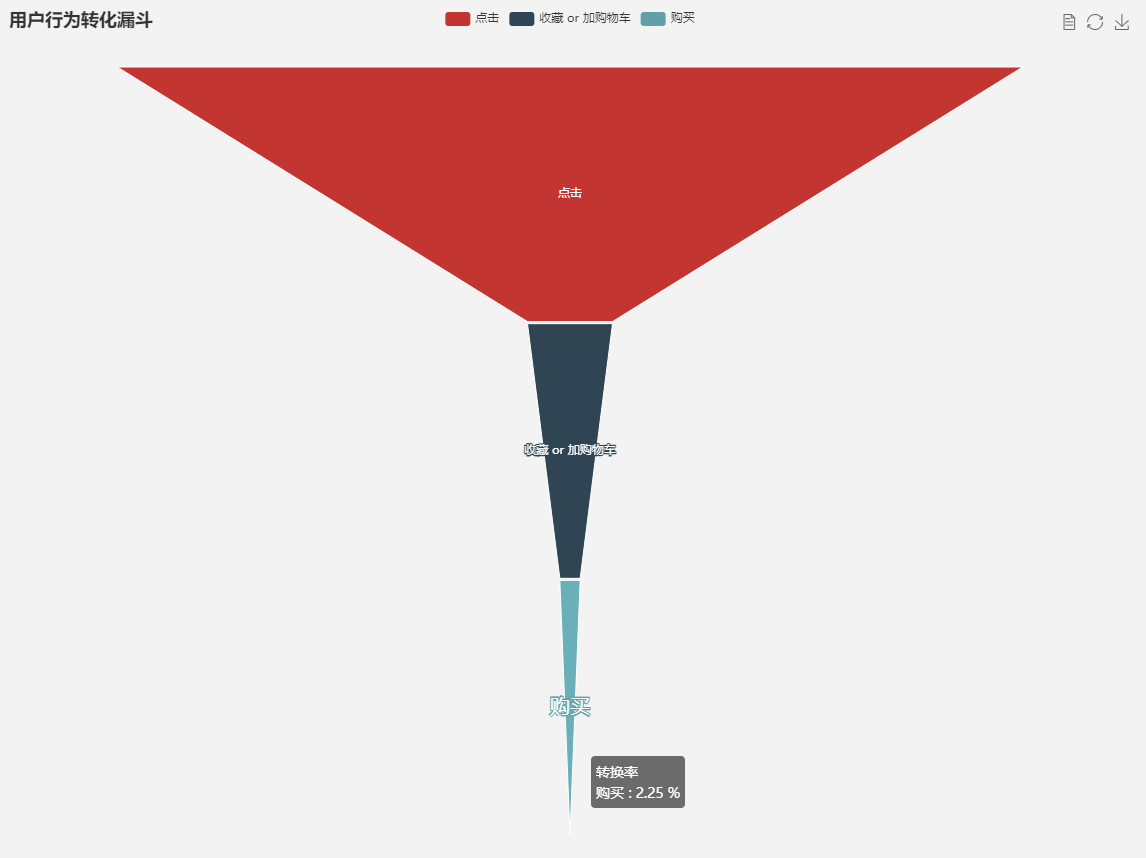
- 小结:2017-11-25 到 2017-12-03 这段时间,点击数为 89,660,671 ,收藏数为 2,888,258,加购物车数为5,530,446,购买数为 2,015,807。总体的转化率为 2.25%,这个值可能是比较低的,从加到购物车数来看,有可能部分用户是准备等到电商节日活动才进行购买。所以合理推断:一般电商节前一段时间的转化率会比平常低。
3.3 用户行为习惯
-- 一天的活跃时段分布
select hour(datetime) as hour,sum(case when behavior_type = 'pv' then 1 else 0 end) as pv, --点击数sum(case when behavior_type = 'fav' then 1 else 0 end) as fav, --收藏数sum(case when behavior_type = 'cart' then 1 else 0 end) as cart, --加购物车数sum(case when behavior_type = 'buy' then 1 else 0 end) as buy --购买数
from user_behavior
group by hour(datetime)
order by hour;
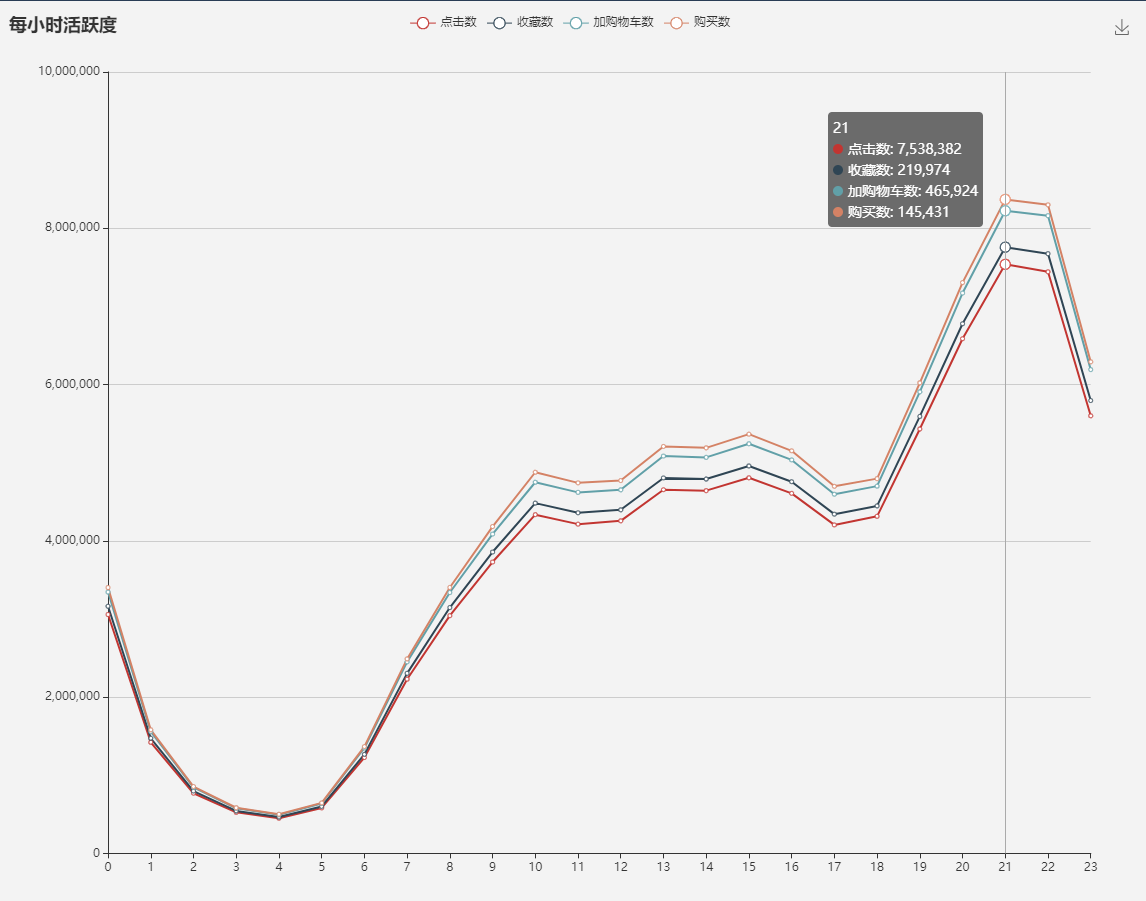
--一周用户的活跃分布
select pmod(datediff(datetime, '1920-01-01') - 3, 7) as weekday,sum(case when behavior_type = 'pv' then 1 else 0 end) as pv, --点击数sum(case when behavior_type = 'fav' then 1 else 0 end) as fav, --收藏数sum(case when behavior_type = 'cart' then 1 else 0 end) as cart, --加购物车数sum(case when behavior_type = 'buy' then 1 else 0 end) as buy --购买数
from user_behavior
where date(datetime) between '2017-11-27' and '2017-12-03'
group by pmod(datediff(datetime, '1920-01-01') - 3, 7)
order by weekday;
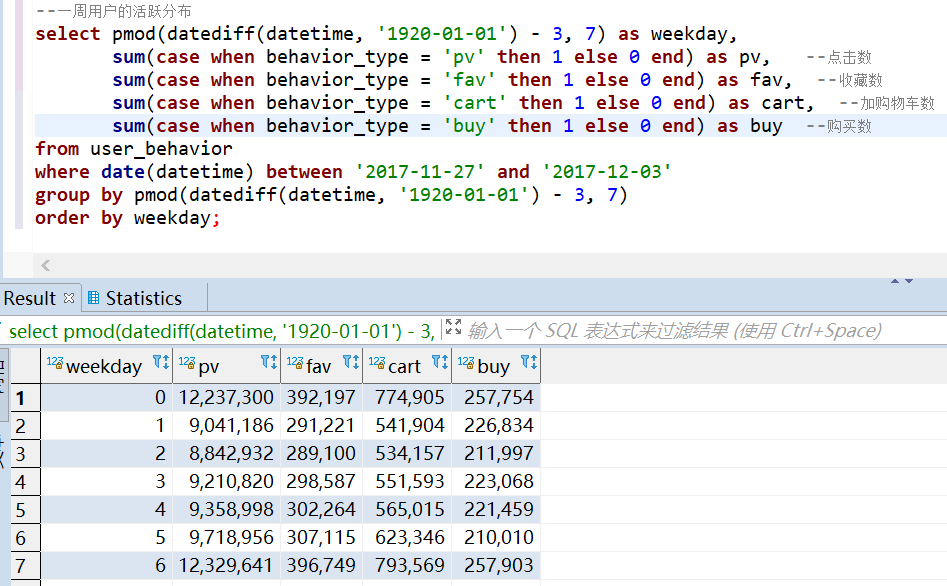
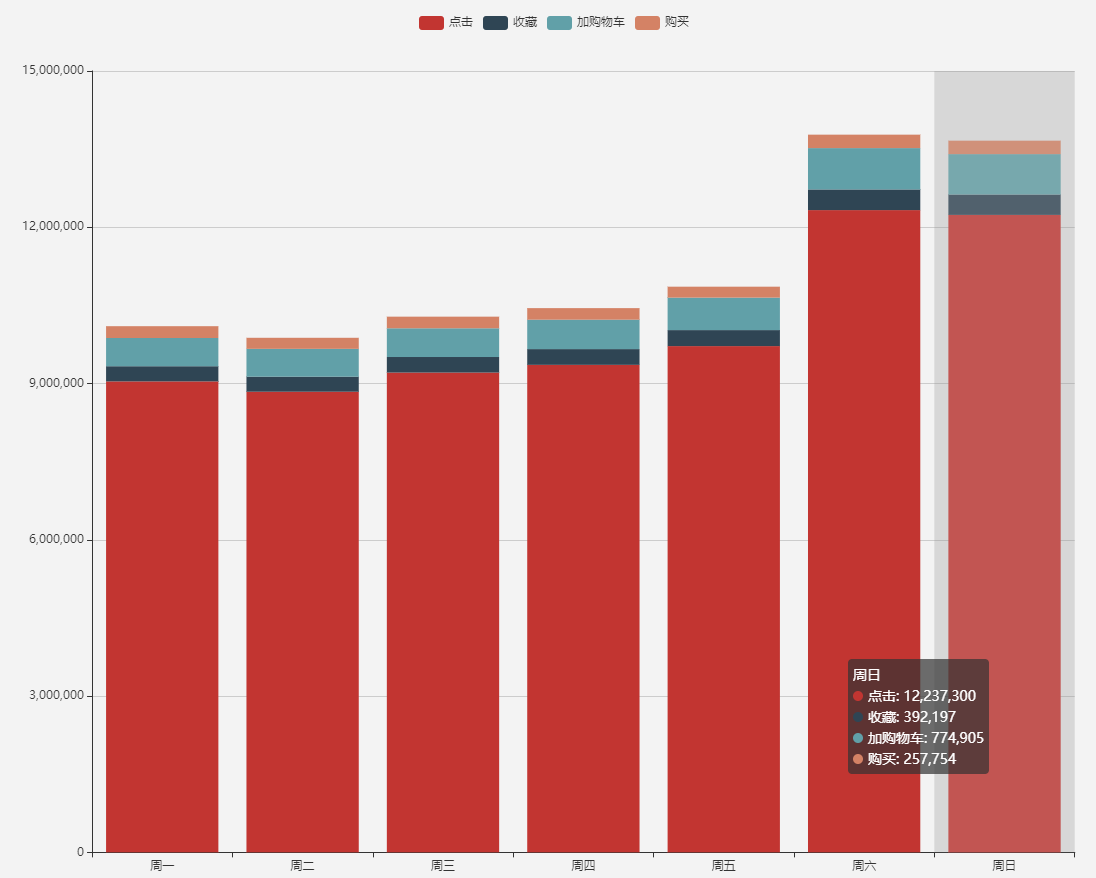
- 小结:晚上21点-22点之间是用户一天中最活跃的时候,凌晨 4 点,则是活跃度最低的时候。一周中,工作日活跃度都差不多,到了周末活跃度有明显提高。
3.4 基于 RFM 模型找出有价值的用户
RFM 模型是衡量客户价值和客户创利能力的重要工具和手段,其中由3个要素构成了数据分析最好的指标,分别是:
- R-Recency(最近一次购买时间)
- F-Frequency(消费频率)
- M-Money(消费金额)
--R-Recency(最近一次购买时间), R值越高,一般说明用户比较活跃
select user_id,datediff('2017-12-04', max(datetime)) as R,dense_rank() over(order by datediff('2017-12-04', max(datetime))) as R_rank
from user_behavior
where behavior_type = 'buy'
group by user_id
limit 10;--F-Frequency(消费频率), F值越高,说明用户越忠诚
select user_id,count(1) as F,dense_rank() over(order by count(1) desc) as F_rank
from user_behavior
where behavior_type = 'buy'
group by user_id
limit 10;--M-Money(消费金额),数据集无金额,所以就不分析这一项
对有购买行为的用户按照排名进行分组,共划分为5组,
前 - 1/5 的用户打5分
前 1/5 - 2/5 的用户打4分
前 2/5 - 3/5 的用户打3分
前 3/5 - 4/5 的用户打2分
前 4/5 - 的用户打1分
按照这个规则分别对用户时间间隔排名打分和购买频率排名打分,最后把两个分数合并在一起作为该名用户的最终评分
with cte as(
select user_id,datediff('2017-12-04', max(datetime)) as R,dense_rank() over(order by datediff('2017-12-04', max(datetime))) as R_rank,count(1) as F,dense_rank() over(order by count(1) desc) as F_rank
from user_behavior
where behavior_type = 'buy'
group by user_id)select user_id, R, R_rank, R_score, F, F_rank, F_score, R_score + F_score AS score
from(
select *,case ntile(5) over(order by R_rank) when 1 then 5when 2 then 4when 3 then 3when 4 then 2when 5 then 1end as R_score,case ntile(5) over(order by F_rank) when 1 then 5when 2 then 4when 3 then 3when 4 then 2when 5 then 1end as F_score
from cte
) as a
order by score desc
limit 20;
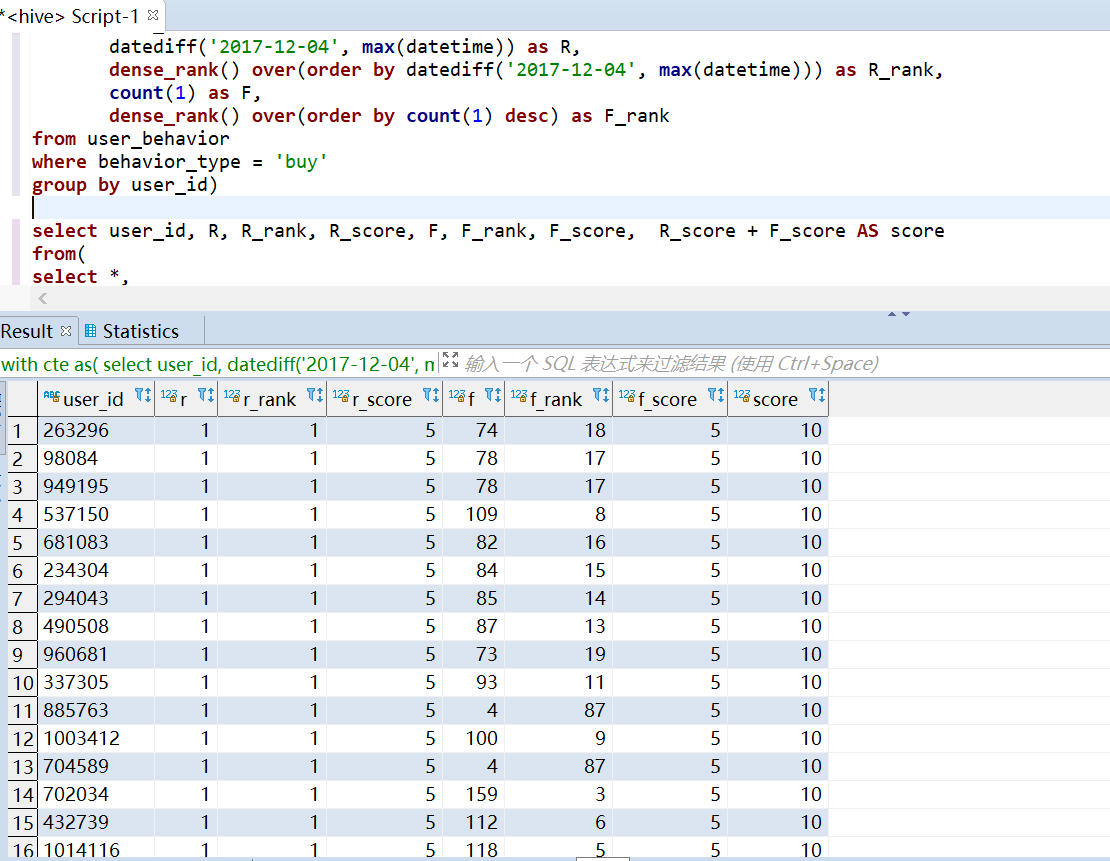
- 小结:可以根据用户的价值得分,进行个性化的营销推荐。
3.5 商品维度的分析
--销量最高的商品
select item_id ,sum(case when behavior_type = 'pv' then 1 else 0 end) as pv, --点击数sum(case when behavior_type = 'fav' then 1 else 0 end) as fav, --收藏数sum(case when behavior_type = 'cart' then 1 else 0 end) as cart, --加购物车数sum(case when behavior_type = 'buy' then 1 else 0 end) as buy --购买数
from user_behavior
group by item_id
order by buy desc
limit 10;--销量最高的商品大类
select category_id ,sum(case when behavior_type = 'pv' then 1 else 0 end) as pv, --点击数sum(case when behavior_type = 'fav' then 1 else 0 end) as fav, --收藏数sum(case when behavior_type = 'cart' then 1 else 0 end) as cart, --加购物车数sum(case when behavior_type = 'buy' then 1 else 0 end) as buy --购买数
from user_behavior
group by category_id
order by buy desc
limit 10;
- 小结:缺失商品维表,所以没有太多分析价值。假如有商品维表,可以再展开,以商品纬度进行分析,比如不同行业、不同产品的转化率,还有竞品分析等等。


